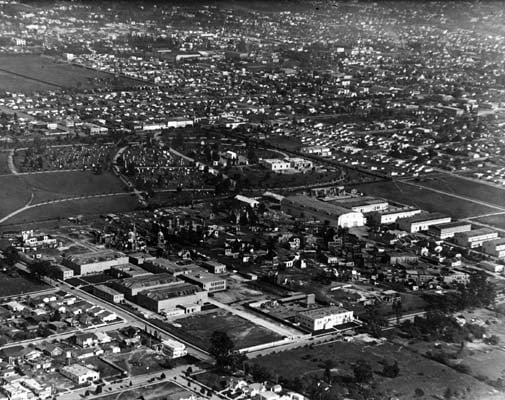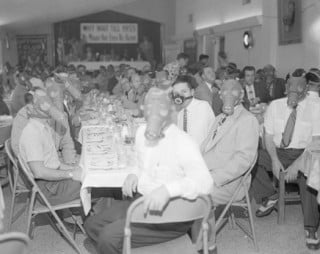The summer of 1943 was a season that Los Angeles citizens would do well to always remember.

This visibility-impairing (sight distances had been reduced to just feet) toxic-air morass was later determined to be linked to gasoline-produced hydrocarbons and oxides of nitrogen released from internal-combustion engines, the combination, in the presence of sunlight, caused what is now more familiarly and infamously known as L.A. smog. Industrial pollution to a limited degree contributed also.
With the sources identified, efforts to address the problem could get underway and get underway they did and with gusto zeal.
Accomplishments made included the first auto emissions standards in the nation – in 1966 for carbon monoxide and hydrocarbons; in 1971 for oxides of nitrogen; and in 1982 for particulates “from diesel-fueled vehicles,” the CARB noted. Nineteen-seventy-five in the Golden State, meanwhile, is the time when automotive catalytic converters first appeared on scene.
So, from where did this smog come?
So, why did it seem like overnight that conditions in the region had all of a sudden changed?
It is helpful to know how smog forms.
In “75 years of L.A. smog. That’s more than enough you would think,” I wrote: “What one needs to understand is that smog is typically a warm-weather phenomenon. Light from the sun, oxides of nitrogen (NOx) and hydrocarbons (HC) combine to create ozone. It is this ozone in addition to heat, motor-vehicle emissions coupled with gasoline vapors, chemicals, solvents and paints (volatile organic compounds or VOC), for example, that enable smog’s formation and why such ingredients are referred to as smog-forming emissions.”
But, there is more to the story than just this. A huge factor was sprawl.
Sprawl? Yes, sprawl!

“With so many more people living in the state’s southern third one would think this region would top the air pollution hot-spot list and where ozone is concerned, at least, one would be correct,” in “The polluted, pristine, the in-between: Diverse California,” I submitted. “The air basin contains anywhere from above a third to almost half of the entire population, much of the traffic and the majority of driving in state.”
Now add in the well-spread-out expansive housing component and the story is nearly complete. When Imperial, Orange, Riverside, San Bernardino and Ventura counties are added in, the land area we’re talking about here covering an area totaling 38,000 square miles that includes in it nearly 200 cities on which sits residential dwellings enough to house almost 20 million people, it makes perfect sense. (For more, see: “Landmark California program could have huge emissions-reductions impact” here).
Besides being a side effect of transportation and travel generally, there are other contributing factors as well, such as manufacturing, trade, industries like aerospace, agriculture, entertainment, oil drilling and refining, and tourism.
Building resiliency, sustainability into SoCal communities
If there is a glimmer of hope for the southland region, consider what then Natural Resources Defense Council staffer Kaid Benfield in his “How California is planning growth for a prosperous economy and clean environment,” Switchboard blogpost1 wrote:
“The SoCal strategy2 aggressively invests in public transit to serve both current residents and four million new ones, along with 4.2 million new jobs, 87 percent of which would be within a half-mile’s walk of transit service. The new strategy is also projected to reduce pollution-caused respiratory problems by 24 percent, resulting in $1.5 billion per year in health care savings, and to save over 400 square miles of farmland and other open space from development.” Horizontal sprawl development if one is to be more precise.
Notes
- Source for the Kaid Benfield reference: “Landmark California program could have huge emissions-reductions impact”
- The “strategy” being referred to here is part of the state’s Sustainable Communities Strategies (SCS) program which was created from the passage of the then landmark California Senate Bill 375, otherwise known as the Sustainable Communities and Climate Protection Act of 2008, the SCS specified for and adopted by the southland region approved by the Southern California Association of Governments in April of 2012 and, which, by the way, extends to year 2037
Image (lower): Los Angeles Public Library Photo Collection
This post was last revised on Sept. 27, 2020 @ 3:42 p.m. Pacific Daylight Time.
– Alan Kandel
